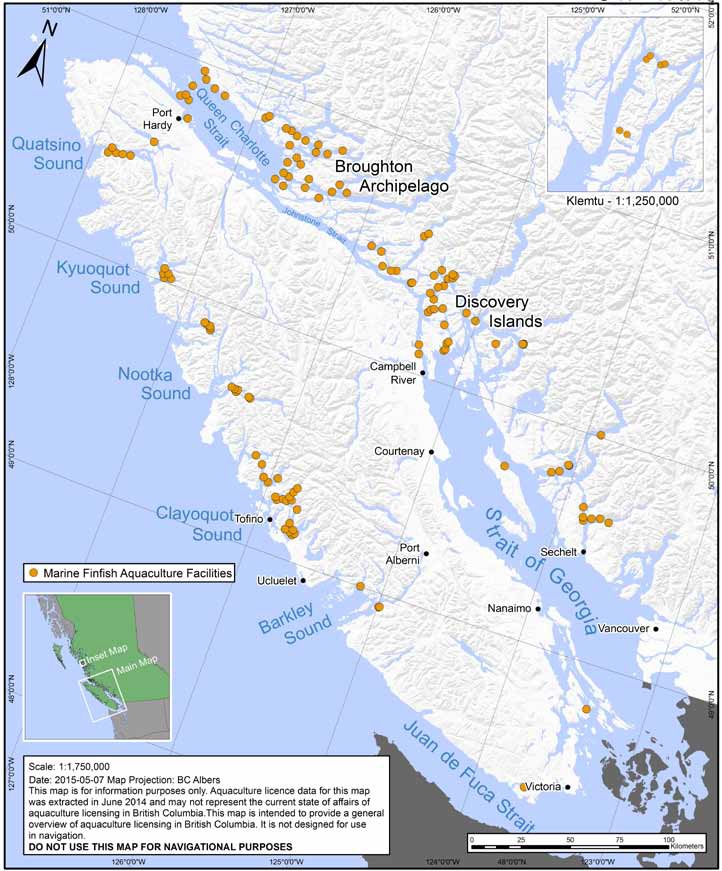Archived – Regulating and monitoring British Columbia’s marine finfish aquaculture facilities 2011–2014
Table of Contents
- Summary of marine finfish aquaculture in British Columbia
- How aquaculture facilities are regulated
- Assessing compliance
- Reporting requirements and reports submitted
- Monitoring and audits: Fish health
- Monitoring and audits: Environmental
- Monitoring and audits: Inventory and aquaculture statistics
- Summary
Summary of Marine Finfish Aquaculture in British Columbia
In British Columbia, the aquaculture industry is primarily regulated and managed by Fisheries and Oceans Canada (DFO). DFO began licensing aquaculture facilities in B.C. in December 2010. Between 2010 and 2014, DFO licensed up to 123 marine finfish aquaculture facilities (“fish farms”) with a total combined peak production of over 280,000 metric tonnes of fish. Generally, about half of these facilities have fish on site at any given time. A list of all current licence holders for marine finfish aquaculture is available on the DFO website.
Marine Finfish Species Cultivated in British Columbia
The majority of marine finfish aquaculture licences are issued for salmon, with Atlantic salmon (Salmo salar) and chinook salmon (Oncorhynchus tshawytscha) being the most commonly farmed fish in B.C. Some other species are also cultivated on a smaller scale, including sablefish/black cod (Anoplopoma fimbria) and coho salmon (Oncorhynchus kisutch).
Atlantic salmon is the preferred species for marine finfish cultivation around the world because these fish feed well on pellets, are efficient at converting food to body mass, grow quickly, and are well adapted to the confines of a net pen.
Locations of Marine Finfish Aquaculture Facilities
The majority of the marine finfish aquaculture facilities are located around northern and western Vancouver Island. There are clusters of sites in several areas, such as Clayoquot Sound, the Port Hardy area, the Broughton Archipelago, and the Discovery Islands (Figure 1).

- Date modified: